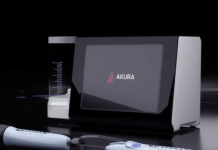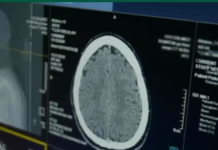Tento+ has announced that the latest iteration of its ground-breaking dashboard will serve as the first ever generative AI tool being used in the medical compliance sector.
Tento+ is on course to enhance and boost the evolution of the medtech market across the world as more medical devices are set to enter service across a wide range of medical sectors in response to a diverse and ever-growing range of health needs.
The medical device market has undergone consistent levels of growth over the past decade and is projected to grow at a compound annual growth rate (CAGR) of 5.4% in forecast period 2021 – 2028. The World Health Organisation reports that there are an estimated 1.5 million medical devices globally, across more than 10,000 specific types. However, it is reported than the average medical device takes 3-7 years to reach the market and compliance is cited as one of top concerns for business leaders.
To account for the spiralling demand for regulatory approval of new medical devices, Tento+ has leveraged generative AI to streamline the process for any business. Already, the Tento+ team has documented and tested significant time savings. For the average project/submission, 236 hours of time could be saved by using Tento+’s generative AI-tool.
Tento+’s AI-powered in-built tool guides and supports companies with meeting the compliance requirements; it’s a one-stop-shop for companies looking to develop medical devices, and to manage their design controls.
The tool allows users to enter a brief device description, and then provides tailored insights and suggestions for design requirements, test plans, and more. Users can also understand automatically which design standards apply to their device and generate automated checklists that are required.
RELATED: Innovative Health and NotiSphere partner reducing the impact of medical device recalls
In a recent trial of five projects using Tento+, the AND Technology Research team was able to calculate how much time Tento+ can save a company when working through the medical submission regulation process.
Commenting on the launch of Tento+ and the trial findings, CEO of Tento+, Dr Nicola Thorn said: “The potential of generative AI in medical compliance is enormous. From authoring content to assessing changes on a device, the generative AI is the first tailored to the world of medical compliance. It is fine-tuned with expert input and tested on hundreds of devices. This is proving to be a genuine game changer!
“So many innovators and engineers struggle in navigating the regulation process and not knowing where to start. This no longer has to be the case. There are many hurdles, so many complex considerations to make, and it bleeds businesses’ time and money. This is where the power of generative AI comes in. Tento+ has always offered a simple platform, that aides and speeds up management of design control process. And now, our algorithm means that the whole of Tento+ is tailored directly to your device, specifically generated for your product.
“It’s a ‘world first’ that’s set to change the world for medical compliance! Anyone interested should book a demo with us today.”
Other Tento+ features:
Users will also be able to capture and analyse certain technical, risk and clinical information directly in Tento+. Users will then be able to record traceability matrices, testing records and anomalies as well as risk and usability controls. From here, users can automatically generate technical documentation such as test plans, test logs and records, software decompositions and software requirements for use within submissions to regulatory bodies.
Tento+ dashboard is a purpose-built web-based tool that enables developers, project managers, QR, and test engineers to track, manage, and organise their product development and testing journey. The dashboard provides engineers with quick insights into the progress of their project as test scripts, anomalies, and the requirements traceability matrix are all accessible in one place. Thanks to end-to-end visibility across the software testing lifecycle, development teams can now easily map and visualise the relationship and test coverage of user requirements, software function, unit, and code.






